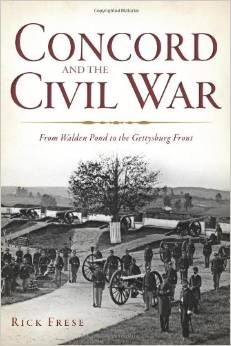The Gettysburg Campaign in Numbers and Losses: Synopses, Orders of Battle, Strengths, Casualties, and Maps, June 9 – July 14, 1863 by J. David Petruzzi and Steven Stanley. Savas Beatie, 2013. Cloth, ISBN: 1611210804. $32.95.
 Civil War veterans were obsessed with numbers and losses. Regimental historians corresponded with their former comrades for decades, hoping to render an “accurate” depiction of their wartime travails. Grand Army men impatiently combed compendiums by two comrades, William F. Fox and Thomas L. Livermore. And ex-prisoners of war like Gustavus Gessner went to their graves determined to persuade agnostic northern civilians of Andersonville’s hideous history.
Civil War veterans were obsessed with numbers and losses. Regimental historians corresponded with their former comrades for decades, hoping to render an “accurate” depiction of their wartime travails. Grand Army men impatiently combed compendiums by two comrades, William F. Fox and Thomas L. Livermore. And ex-prisoners of war like Gustavus Gessner went to their graves determined to persuade agnostic northern civilians of Andersonville’s hideous history.
Numbers matter, and they can help us assess a campaign – so long as we concede that official records and muster rolls are uneven and imperfect; that legions of men bearing “invisible scars” were left off the books; and that behind each blasted tick mark is a human life.
Historians J. David Petruzzi and Steven A. Stanley [The Complete Gettysburg Guide (2009) and The New Gettysburg Campaign Handbook (2011)] make each of these things clear in their newest book – an elegant study of numbers and losses in the Gettysburg campaign. On glossy pages, the authors exhibit some forty orders of battle – documenting each of the campaign’s engagements from the cavalry clash at Brandy Station, Virginia, on June 9, 1863, to the skirmish at Falling Waters, Maryland, on July 14, 1863. Integrated into each order of battle is a meticulous accounting of fatalities for every Union and Confederate regiment. In addition to identifying the at times dizzying array of field commanders, these orders of battle report the effective strengths and percentages lost at the division, brigade, and regimental levels. For the largest of the engagements, Petruzzi and Stanley provide convenient graphs that register the losses suffered in each branch of service (artillery, cavalry, and infantry). And, as if this were not enough, most entries are also illustrated by Stanley’s full-color battlefield maps. The outstanding cartography neatly captures both the ebb and flow of the fighting and every hill and dale on the fields.
A brisk epilogue ponders the larger implications of these statistics. For one, Petruzzi and Stanley contend that the “grievous losses” they document in the cavalry and artillery units on both sides have not been fully appreciated or recognized by previous historians (205-207). One suspects, however, that after contemplating these stunning pages, scholars will come away with other, equally startling conclusions.
The authors rightly concede that orders of battle “are dynamic rather than static” (xi). Readers who have spent many years researching particular aspects of the battle or campaign will no doubt find errors. This reviewer, for instance, noted that Colonel Seraphim Meyer, who led the 107th Ohio into battle, is reported as “wounded”; in fact, Meyer abandoned his regiment as it was assaulted atop Blocher’s Knoll on that fateful afternoon of July 1. He became the only federal colonel court-martialed for cowardice at Gettysburg. Fortunately, the authors have invited readers to submit, through the publisher’s website, any evidence that might “correct or revise” information in a subsequent edition of the book (xi).
Compiling numbers and losses on this scale not only requires shrewd judgment, but indefatigable research. Petruzzi and Stanley have achieved both. But a major shortcoming of this book is that the authors opted not to include what must be a remarkable bibliography. The acknowledgements and a short “recommended reading” section pay homage to a few of the secondary works the authors consulted, but future researchers would owe an even greater debt to Petruzzi and Stanley had they chosen to include a full accounting of the “published and unpublished sources” alluded to on the dust jacket. One hopes that the authors will make their bibliography available, either in an online platform or in a revised edition.
Nonetheless, this volume is an indispensable addition to any Gettysburg reference collection. This is one of those rare books that will be equally useful to both amateur historians, who will find it an accessible guide, and seasoned scholars, who will wrestle with its implications for decades. When I am not carting it out to the battlefield, it will occupy a prominent place in my personal library.
Brian Matthew Jordan is Adjunct Instructor of Civil War Era Studies at Gettysburg College. He is currently finishing a book, Embattled Memories: Union Veterans and Their Unending Civil War, slated for release in 2015.

